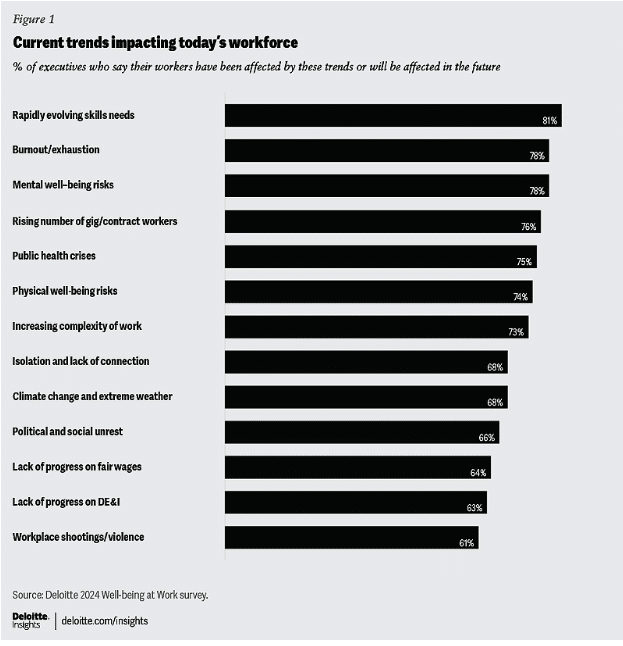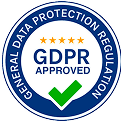Software innovations are transforming corporate wellness programs, making them smarter, more efficient, and better at driving employee engagement. From automation and personalized content to real-time insights and progress tracking, software platforms like CoreHealth empower organizations to build meaningful, results-driven health and wellness initiatives.
However, while technology is a powerful enabler, it also presents its challenges. Misuse or over-reliance can derail your wellness goals and negatively impact trust and participation. This article examines the best practices and pitfalls of wellness solutions.
✅ Dos vs ❌ Don’ts of Wellness Technology Implementation
| ✅ Do | ❌ Don’t |
| Automate tasks like reminders and scheduling to reduce admin burden | Use tech to monitor personal habits or productivity |
| Personalize wellness journeys based on data and individual goals | Over-rely on dashboards without qualitative feedback |
| Track participation with dashboards and adjust programs using insights | Replace all human coaching with AI-only solutions |
| Use gamification to increase engagement and motivation | Ignore algorithmic bias or fairness in wellness metrics |
| Launch group challenges and use social features to build community | Automate everything without real human connection |
| Communicate clearly about data use and offer opt-in tracking | Set up a platform once and never review or update it |
| Audit privacy and limit data access based on roles | Use default settings without customizing to company culture |
| Train HR/wellness leaders to use all platform features | Ignore employee feedback or engagement drop-offs |
Do: Use Software to Enhance Wellness Program Outcomes
Modern platforms are designed to make wellness programs more effective and scalable. When used properly, software enables organizations to deliver personalized, measurable, and engaging wellness experiences at scale.
Key Benefits:
- Automate reminders, scheduling, and wellness challenges to reduce administrative loads: Digital platforms help HR teams automate routine tasks such as sending reminders, scheduling biometric screenings, and launching wellness challenges.
- Personalize wellness journeys based on goals, behavior, and health data: Software can tailor content and recommendations using real-time health data, individual preferences, and goals. With 74% of surveyed employers saying their employees are being affected (or will soon be affected) by physical well-being risks, a robust wellness software is essential for employee health.

Image Source: Deloitte.
- Track participation and progress with dashboards and analytics: Interactive dashboards give HR leaders clear visibility into employee participation and outcomes.
- Use data to make continuous improvements: A platform can identify patterns, allowing HR teams to adjust timing, incentives, or messaging in response to engagement trends.
- Boost employee engagement through gamification and feedback loops: Gamified elements such as leaderboards, badges, and challenges add fun and motivation. Feedback loops — in which employees can see their progress and receive encouragement — help sustain participation.
Do: Use Technology to Foster Community and Motivation
Wellness is not just an individual journey — it thrives in social settings. Corporate wellness platforms can create shared experiences that build accountability and peer support.
Best Practices:
- Launch group challenges that encourage collaboration: Teams can bond while working toward shared goals, improving both morale and program results.
- Offer social feeds and discussion forums for motivation: Built-in forums or activity feeds allow employees to share progress, post tips, or cheer on their peers.
- Recognize and reward milestones publicly (if opted in): When employees opt in, public recognition — like a shoutout on a wellness leaderboard or digital badge — reinforces positive behavior and motivates others to engage.
- Use mobile apps to maintain momentum across teams: Mobile functionality ensures employees can participate in wellness activities anytime, anywhere. Push notifications and on-the-go tracking help sustain engagement during busy schedules.
- Empower wellness champions to lead tech-supported events: Internal wellness ambassadors can use technology to host virtual sessions, coordinate challenges, and share updates. Their involvement builds grassroots momentum and adds a human touch to digital programs.
Do: Prioritize Data Privacy and Employee Trust
As wellness programs adopt advanced tech, data security becomes central to long-term success. Employees need to feel confident that their personal health information is protected and used ethically. Communicating and respecting boundaries builds the trust that underpins participation.
Key Guidelines:
- Use platforms that comply with data protection regulations like HIPAA and the GDPR: Only use wellness platforms that meet recognized security standards. Compliance with regulations like HIPAA in the United States or the GDPR in Europe is essential to avoid legal risks and build credibility.
- Communicate what data is collected, how it’s used, and who has access: Transparency builds trust. Employees should know exactly what data is being collected — whether it’s step counts or stress levels — and how it’s being used to improve their experience.
- Offer opt-in choices for all personal health tracking features: Participation in any data collection must be voluntary. Providing opt-in choices respects personal boundaries and empowers employees to control their information.
- Limit access to sensitive data based on job roles and responsibilities: Only designated personnel should have access to individual wellness data, and only when necessary. Access controls reduce the risk of misuse or accidental exposure.
- Regularly audit the system for vulnerabilities and update privacy policies: Frequent security audits and clear, updated privacy policies demonstrate a company’s commitment to data protection and foster long-term employee confidence.
Don’t: Use Technology to Monitor or Micromanage Employees
While it’s tempting to use wellness software for detailed tracking, crossing the line into surveillance can damage trust and participation. Technology should empower, not intimidate.
Common Pitfalls:
- Using health data to monitor employee habits or productivity: Monitoring step counts, sleep, or stress levels to assess employee performance undermines psychological safety. According to Management Consulted, 30% of employees would consider quitting if they were feeling micromanaged.
- Over-relying on dashboards to measure employee well-being instead of engagement: Dashboards alone can’t capture how supported employees feel — a crucial component of long-term engagement.
- Replacing coaches or wellness leaders with AI-only interactions: Automated chatbots or AI modules can supplement human support but shouldn’t replace it.
- Ignoring algorithmic biases that may affect certain groups unfairly: Algorithms can unintentionally penalize individuals with chronic conditions or different baselines.
- Automating too much and losing the human connection: Full automation can make programs feel cold and impersonal.
Don’t: Set and Forget Your Platform
Implementing a successful wellness program isn’t a one-time task — it requires ongoing evaluation, customization, and alignment with evolving employee needs.
Mistakes to Avoid:
- Using default settings without tailoring features to your culture: Customization — like department-specific goals or cultural holiday tie-ins — drives relevance and participation.
- Ignoring user feedback or drop-off rates: Low engagement often signals usability issues or content fatigue. Regular surveys and usage data can help identify and fix these problems quickly.
- Failing to train HR teams or wellness leaders on platform capabilities: Without proper training, teams may underutilize features like reporting, personalization, or community building.
- Letting the program run without performance reviews or outcome metrics: Programs must be reviewed quarterly or annually to assess their effectiveness.
Empower Wellness the Right Way — With the Right Technology
When thoughtfully applied, advanced software can turn your workplace wellness program into a powerful, people-first initiative that drives lasting engagement and measurable results. CoreHealth’s flexible platform helps HR teams personalize wellness experiences, track outcomes, and build a culture of health without sacrificing the human connection.
By following the dos and avoiding the don’ts, your program becomes more than just a platform — it becomes a strategic advantage for your organization and a meaningful experience for your employees.
Ready to upgrade your wellness strategy? Explore CoreHealth’s platform and see what’s possible.
Learn more by checking out these articles from the CoreHealth blog:
- Corporate Wellness Programs and the Power of SaaS Technology
- 10+ Must Have’s in Corporate Wellness Technology
- Should You Build or Buy Wellness Technology?

